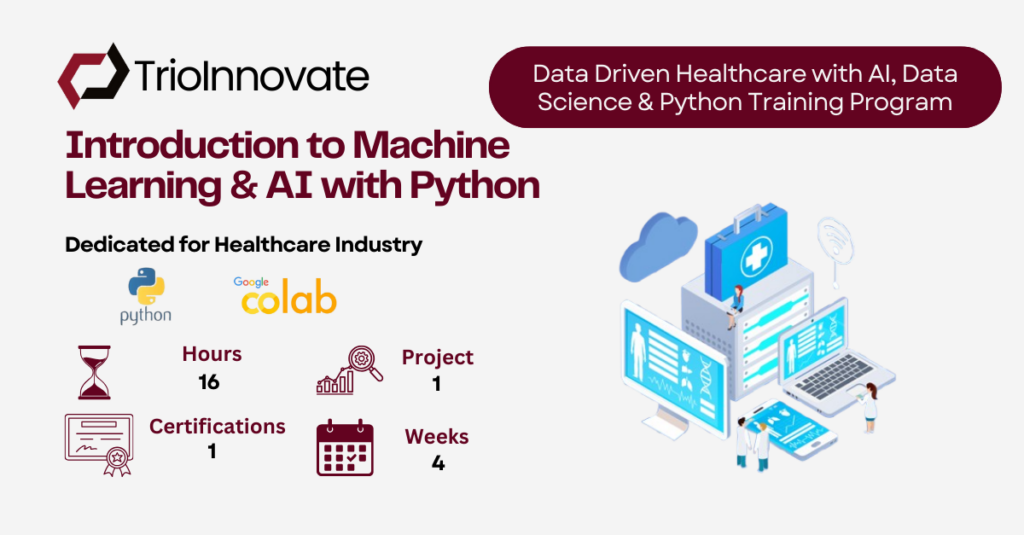Introduction to Machine Learning & AI with Python
Course Overview
This course provides a hands-on introduction to machine learning and AI using Python. Participants will learn key concepts such as supervised and unsupervised learning, model evaluation, and feature engineering. The course covers popular libraries like Scikit-Learn and TensorFlow, with practical applications in healthcare and business. By the end, students will be able to develop and interpret basic machine learning models to solve real-world problems.
Key Skills
- Supervised Learning Fundamentals (Classification & Regression)
- Python for Machine Learning (Pandas, NumPy, Scikit-learn)
- Key ML Algorithms (Linear Regression, Decision Trees, SVM, k-NN)
- Model Evaluation & Metrics (Accuracy, Precision, Recall, F1-Score)
- Data Preprocessing & Feature Engineering
- Hyperparameter Tuning & Model Optimization
Course Outline
Introduction to AI & Machine Learning with Python
Fundamentals of AI and Machine Learning concepts
Lessons Objective
- Understanding Supervised Learning (Classification & Regression)
- Model Training & Evaluation
- Overfitting & Underfitting
Implementing ML algorithms using Python
Lessons Objective
- Working with Scikit-learn
- Data Handling with Pandas & NumPy
- Data Visualization using Matplotlib & Seaborn
Data preprocessing and model evaluation techniques
Lessons Objective
- Linear Regression
- Decision Trees
- Support Vector Machines (SVM)
- k-Nearest Neighbors (k-NN)
- Logistic Regression
Introduction to libraries like NumPy, Pandas, Matplotlib, and Scikit-learn
Lessons Objective
- Performance Metrics (Accuracy, Precision, Recall, F1-Score)
- Train-Test Split & Cross-Validation
- Hyperparameter Tuning
- Feature Selection & Engineering
Projects in this course
In this project, you will apply supervised machine learning techniques to predict customer churn for a telecom company. Using a real-world dataset, you will:
- Preprocess the data (handling missing values, encoding categorical features)
- Train and evaluate models like Logistic Regression, Decision Trees, and k-NN
- Compare model performance using metrics like accuracy, precision, recall, and F1-score
- Optimize models through hyperparameter tuning
- Visualize insights with Matplotlib & Seaborn
By completing this project, you will gain hands-on experience in classification problems, model evaluation, and real-world data handling.

Course Duration:
10 Hours
Earned Skills:
Python, Problem Solving, Supervised Learning Algorithms
Earn Certification:
Earned a valuable certificate to boost your resume


